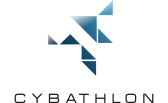Bionic Olympians tackle everyday obstacles with cutting edge tech
Robin Christopherson | 08 Nov 2016Dubbed the ‘world’s first bionic Olympics’ the world Cybathlon championship in Kloten, Switzerland in October featured six types of contest, with disabled competitors contestants form around the world using and controlling assistive devices and robotic technologies. Cutting bread, climbing stairs and unwrapping a sugar cube may not sound like the ultimate in sporting challenges but the amazing competitions that took place showed how advanced technologies can help people with disabilities in daily life.
The events thoroughly tested how these technologies allow users to complete day-to-day tasks. For example, in the ‘powered arm prosthesis race’, competitors with an arm amputation tried to complete tasks such as cutting and spreading jam on a slice of bread, carrying a tray of items to a table, opening a door and fitting a light bulb – all using a powered prosthetic arm. In the ‘powered leg prosthesis race’, competitors (referred to as “pilots”, as they need to control or steer their technology) were timed using a bionic exoskeleton suit to navigate stairs, slopes and uneven surfaces.
Cybathlon was created by Robert Riener, head of Health Sciences and Technology, and Professor of Sensory-Motor Systems at the ETH Zurich university in Switzerland. Riener was inspired to start the event when he decided through his daily work that “current assistive technologies are not functional enough and not accepted by many people.”
Further inspiration for Cybathlon came after Riener read a newspaper article about a man with a motorised knee prosthesis running up 103 floors of Chicago’s Willis Tower. Explaining the concept behind Cybathlon, Riener said: “We want to promote the development of useful, acceptable, assistive devices for people with motor disabilities, and not just find the strongest and fastest person with a disability. That is why we have designed race tracks and obstacles that have a meaning for daily life.”
Pilots of future tech
Competitors in Cybathlon are not professional athletes, and instead have to master the devices and technology they use in the events. “That is why we call them ‘pilots’,” said Riener.
The technologies used are largely specialist and highly advanced. Asked if it presents a problem that many disabled people can’t access or afford these technologies, Riener said: “It is normal that the newest high-tech is most expensive … However, we need new devices popping-up to shift previous ideas. High-tech will become used by a broader population and become cheaper, if it functions well. Furthermore, we urge politicians to give larger funding to high-tech devices for people with disabilities.”
A total of 74 athletes from 25 countries took part. Other contests included the ‘powered wheelchair race’, the ‘functional electrical stimulation bike race’ (where pilots with a spinal cord injury or SCI pedal bikes by stimulating their muscles with electrodes), and the ‘brain-computer interface race’ (pilots with an SCI navigate computer game avatars purely through technology that reads their brain signals).
Find out more
- the official Cybathlon site
- The official Cybathlon Youtube Channel
- How robots are helping with image recognition
Based upon a recent article in e-Access Bulletin and used with kind permission of the editor.




